Pile calculates the vertical load carrying capacities and vertical settlements of a range of individual piles in a layered soil deposit. The theory is based on both conventional and new methods for drained (frictional) and undrained (cohesive) soils. Settlements are calculated for solid circular sections without under-ream.
Pile's Key Benefits:
- Pile is a quick and simple method of determining both pile load capacity as well as its settlement and the surrounding ground displacement.
- Pile can be used to perform EC7 calculations. U.K. National Annex is supported.
- Pile can be used to evaluate settlements arising from thermal and cyclic loads.
- Load carrying capacty calculations using static formula from IS 2911 are supported.
- Problems are quick to set up and results are easy to find using the gateway window.
- Results can be exported for post-processing.
The main features of Pile are summarised below:
- The soil is specified in layers. Each layer is set to be drained(frictional) or undrained(cohesive) and appropriate strength parameters are specified. Maximum values can be set for ultimate soil/shaft friction stress and end bearing stress within each layer.
- Settlement calculations can now be performed using t-z curves in addition to Mindlin method.
- Pile can be used to evaluate settlements arising from staged loading using the t-z curves option.
- The user has two choices for selecting datum - Depth below ground level and elevation above Ordnance Datum.
- Porewater pressures within the soil deposit can be set to hydrostatic or piezometric.
- Pile capacities may be calculated for a range of pile lengths and a range of cross-section types such as circular, square and H-section. The circular and square cross-sections may be hollow or solid, whereas the H-section is only solid. Under-reams or enlarged bases may be specified.
- Pile settlements may be calculated for a range of pile lengths and a range of solid circular cross-sections without under-ream.
- There are two approaches available to calculate the capacity of the pile - Working load approach and Limit-state approach.
- The graphical output depicts the variation of different pile capacities such as shaft resistance, end bearing, total bearing capacity of the pile etc. with pile depth. This may be exported in WMF format.
- The text output contains the tabular representation of the above data together with the input data. The user also has the option of exporting these results in CSV format.
* Oasys Pile download link provides trial version of the software.
Pile Capacity, Design Load Estimation and Pile Group Settlement
The GEMS – Pile Group Settlement Analysis software uses modern analytical techniques based on the subsurface soil profile, pile dimensions and group geometry to estimate the pile group settlement.
Predict Soil Displacement Due To Load
Pdisp is for engineers who need software for soil displacement analysis, soil settlement calculations and soil displacement design.
Pile Capacity Estimation, Axial and Lateral Load Analysis
The Comprehensive Pile Foundation Analysis (Land, Bridge & Waterfront Structures) software of GEMS provides feature rich & easy-to-use program modules for pile capacity estimation, axial and lateral load analysis.
This laterally loaded pile analysis software models soil shear failure and non-linear soil behaviour, calculating deflection down the pile together with moments and shear forces within the pile.
Geotechnical Finite Element Analysis
Solve your geotechnical problem with powerful two-dimensional geotechnical finite element design software.
Submit a review about Oasys Pile software with your social media profile

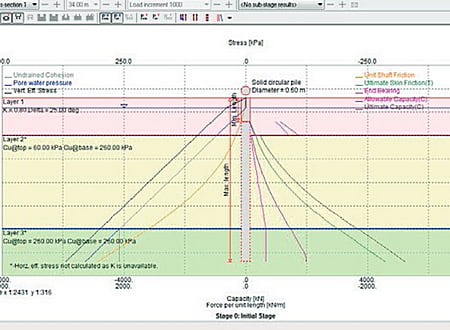
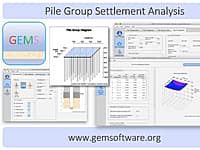
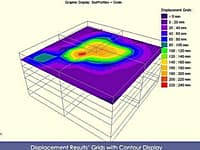
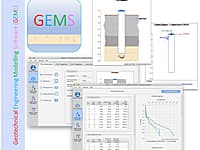
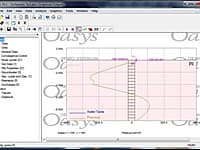
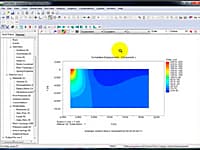
No comments yet. Be the first to comment.